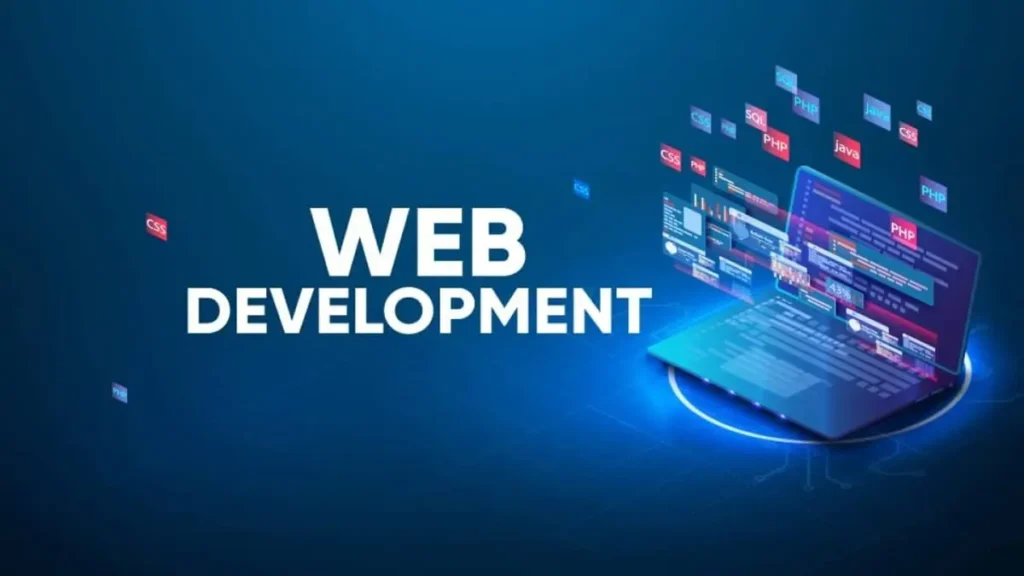In this digital era, a world without websites or apps is unimaginable. From ordering food, checking weather, chatting, or shopping online-there is always an involvement of something exotically termed a web application. But under each smooth interaction lies the realm of web application development.
But what is web application development then? And why is it so instrumental in our day-to-day lives? Let me take a simple explanation forward by talking inception-to-execution-adjoining.

Web Application Development is a process.
Basically, web application development involves creating software that runs within a web browser. Unlike desktop applications, web apps do not require any installation; all one needs is an internet connection and a browser like Chrome, Safari, or Firefox.
Think about Gmail, Facebook, or Netflix. These are not mere websites-they are dynamic and interactive applications that perform tasks, serve content, or react to user input in real time. And that is what makes a web application different from a normal web
Accessibility: One can access the web app from any part of the globe, any time. There are no heavy installations needed or hardware restriction.
Real-time Updates: Developers can push the updates in real time; fixing bugs, updating features while the users are not being asked to download anything.
Scalability: When the business gets bigger, the web applications can enlarge with it. This is highly important in today’s fast-moving environment.
Cross-platform Compatibility: Regardless of the device you use, be it a phone, tablet, or laptop, most web apps resize themselves to fit your screen.
The Building Blocks of Web Application Development
Now we put the value of web applications into context and will take a brief look at how web applications are created. Like in a house, the blueprint would mean the design plan; there would be bricks, wood, and plumbing-the process of web application development entails various stages and tools, languages, and methods.
1. Frontend Development (The Visible Part)
This part is user-focused-It is all about what a user perceives and interacts with, while it also includes semiotics such as buttons, menus, micro-interactions, animations, and forms. The core technologies are:
HTML (HyperText Markup Language): The structure or skeleton of a web page.
CSS (Cascading Style Sheets): The design-namely the colors, fonts, spacing, layout.
2. APIs (Application Programming Interfaces)
APIs invariably acted as messengers, offering the frontend and backend inside conversations unless it was a dueling kind of situation. An instance, such as when you enter your login credentials, it goes through the frontend that through an API sends it over to the backend. The backend then checks its credentials and acts accordingly.
The Development Lifecycle: From Idea to Launch
Let us take a look at the usual journey of a web application-from concept to a live state.
Step 1: Ideation & Planning
It all starts with a problem. Maybe a startup wants to create a platform for freelancers. Or perhaps a school wants to digitize its enrollment system. Developers begin by understanding the user’s needs and mapping out the required functionalities.
Step 2: Design
This is where interfaces and user experience get built. Wireframes and mockups get built with tools such as Figma or Adobe XD.
Step 3: Development
Now coding starts. Frontend and backend engineers, in theory, cut it into pieces and assemble it together.
Step 4: Testing
Every app is tested before going live. After identification of bugs, they get fixed. This helps the app run smooth and free of security issues.
Although web development is fun it is not a bed of roses:
Security: Hackers are always lurking to make an offense in case of any vulnerability. This is why programmers pay much attention to encryption and secure logins, as well as regular checkings.
Browser Compatibility: This issue can easily occur when a website is supported well on chrome but fails when it is opened on Safari. The most important thing is to make sure browsers are consistent.
Performance Optimization: The loading speed should be short. Developers normally require compressing the images, optimizing the codes, as well as caching.
Human Touch in Web Development
Emotions, especially empathy is critical, as opposed to tools and code that come first. Not every developer is a mere code monkey: he or she is solving problems to real people.
A nice looking web application may save a person time, or a small company can expand, or communities can be united. Human is that side of the web application development-and that is why this sphere is so important.
Conclusion: being on the Web is the future
Digital development with web applications has transformed the digital world. Whether it is social media apps, online shops, or productivity tools web apps are what make our internet experiences run.
With the evolution of technology, there is only an increasing demand of new and secure web applications which are user friendly. Are you a business owner who wants to get online, a would-be web developer or simply an aspiring internet user who wants to know how it is that your favorite sites are put together, a knowledge about web application development gives you a window into the future of the internet.
Ultimately, it is not only about developing applications, but developing interconnectivity, solutions and a more intelligent digital world.
